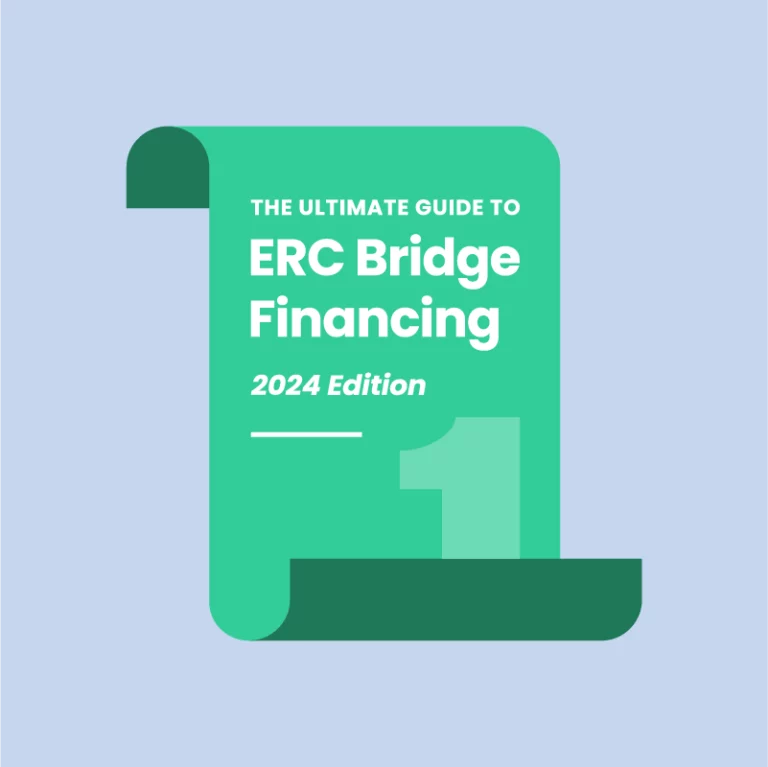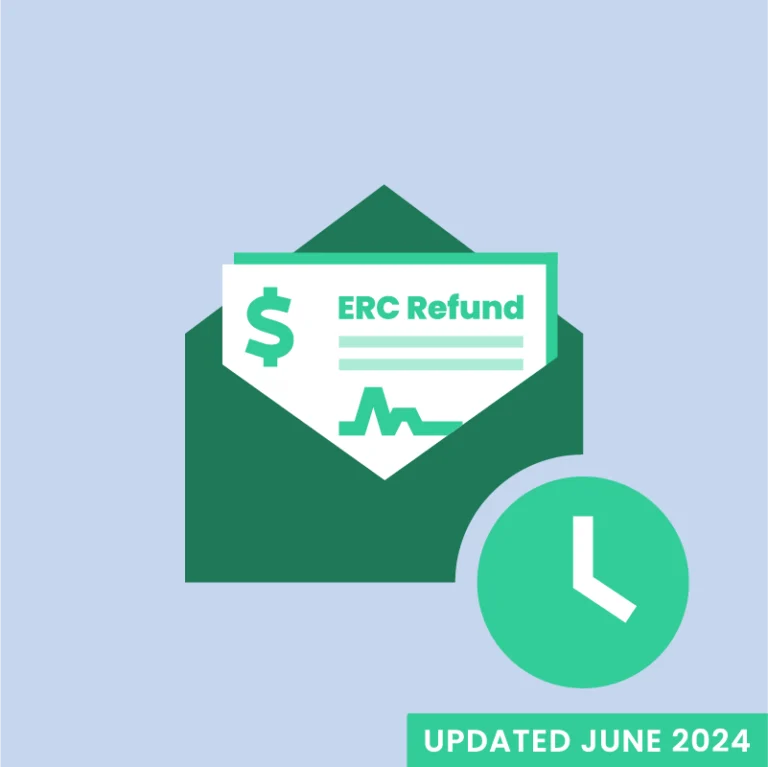The introduction of the IRS ERC moratorium has brought significant changes to the landscape of employee retention tax credits, affecting how businesses approach and handle their claims. In response to the growing backlog of unprocessed Form 941-X reports, the IRS has recently launched the ERC Withdrawal Program and ERC Voluntary Disclosure Program. These initiatives aim to streamline the processing of Employee Retention Credit (ERC) claims and address concerns about potential fraudulent filings.
Understanding the nuances of the ERC refund process is crucial, especially in light of the recent changes brought forth by these new programs. While these programs are designed to alleviate administrative burdens and combat fraud, they also pose significant risks for businesses that might unknowingly forfeit valid ERC claims. Following is an overview of these programs, outlining their benefits, drawbacks, and eligibility criteria — including guidance on how your business can make responsible ERC claims.
IRS ERC Withdrawal Program
The IRS’s ERC Withdrawal Program allows employers to retract their ERC claims before they are processed, essentially treating them as if they were never filed. This program allows employers to avoid ERC audits, related civil penalties, and underpayment interest on the repayment of the ERC, all valuable benefits to employers who may be concerned about their ERC claim being invalid.
Drawbacks to the program include potential forfeiture of valid ERC claims and the required amendment of tax returns. The IRS will not send confirmation whether an employer’s claim is valid, meaning that if an employer participates in the ERC Withdrawal Program, the IRS will cease processing their ERC claim.
The ERC Withdrawal Program is primarily intended for employers uncertain about the legitimacy of their ERC claims. Employers can request a withdrawal of their claim through the following procedures outlined on the IRS’s website.
- Make a copy of the adjusted tax return with the claim you wish to withdraw.
- In the left margin of the first page, write “withdrawn.”
- In the right margin of the first page, an authorized person must sign and date the write their name and title next to their signature.
- Fax a signed copy to the IRS’s ERC claim withdrawal fax line, (855) 738-7609, and keep a copy for your records.
If your claim is currently under audit and you want to withdraw it, you’ll complete the same steps but send it to your assigned examiner instead of the withdrawal fax line. And if you’ve already received a refund check but haven’t cashed it yet, you’ll have to void the check and send it back to the IRS along with your withdrawal request.
Note: Participation in the ERC Withdrawal Program does not protect against criminal charges in cases of willfully fraudulent claims.
IRS ERC Voluntary Disclosure Program
The IRS ERC Voluntary Disclosure Program allows employers to repay their ERC refund at a discounted rate of 80% by March 22, 2024. Unlike the ERC Withdrawal Program, the IRS ERC Voluntary Disclosure Program allows employers to retain the remaining 20% of their ERC refund plus any interest received from the IRS (if applicable). There will be no civil penalties or underpayment interest charged.
Just like with the ERC Withdrawal Program, employers won’t receive confirmation from the IRS whether their ERC claim was valid once they apply to the Voluntary Disclosure Program. Drawbacks include the potential loss of valid ERC claims and the requirement to enter into a Closing Agreement with the IRS. Employers may also need to enter into an installment agreement with the IRS to pay back the money received relating to their ERC claim.
The Voluntary Disclosure Program applies to employers who have received ERC refunds and are uncertain about their claim’s legitimacy. To apply to the program, employers must complete an IRS Form 15434.
Note: Participation in the Voluntary Disclosure Program does not exempt employers from criminal charges in cases of intentional fraud.
Who Should Consider ERC Withdrawal or ERC Voluntary Disclosure
ERC Withdrawal or Voluntary Disclosure isn’t for every business that’s filed an ERC claim. Employers who would most benefit from one of these programs are those with a high risk of ineligibility due to things like reliance on supply chain disruptions without evidence and miscalculated wages. Employers who are concerned about undergoing an ERC audit or ERC fraud allegations might also consider one of these programs.
Companies undergoing changes in ownership or seeking investment may benefit as well. These actions can reduce the risk of complications in internal audits or due diligence processes and present a clearer, more stable financial picture to new owners or potential investors.
How to Claim the ERC Responsibly
To avoid applying for ERC Withdrawal or Voluntary Disclosure, consider the following best practices when making an ERC claim:
- Engage with tax professionals for eligibility assessment
- Keep detailed documentation and records
- Avoid ERC mills that market aggressively or offer unrealistic promises
If you’re planning to use a third-party firm to prepare your ERC claim, be sure to:
- Look for reputable companies with experienced tax professionals
- Check for transparent and competitive fee structures
- Ensure the firm provides due diligence, documentation, and IRS audit support
Navigating ERC Claims with Confidence
Choosing the right third-party support when claiming your ERC refund can significantly reduce your need to use the ERC Withdrawal and ERC Voluntary Disclosure programs. A reputable ERC service provider, like 1st Capital Financial, offers more than just assistance with filing claims.
1st Capital Financial brings to the table a wealth of expertise in navigating IRS procedures, insights into best practices for documentation and claim substantiation, and the ability to foresee and mitigate risks associated with these new IRS initiatives. Additionally, in an era where the threat of ERC fraud is real and ever-present, having a trusted advisor who can help discern legitimate opportunities from risky or fraudulent ones is invaluable.
For expert guidance and reliable support with your ERC claims, explore 1st Capital Financial’s comprehensive ERC Filing Service.
File and Fund Your ERC Claim Today





